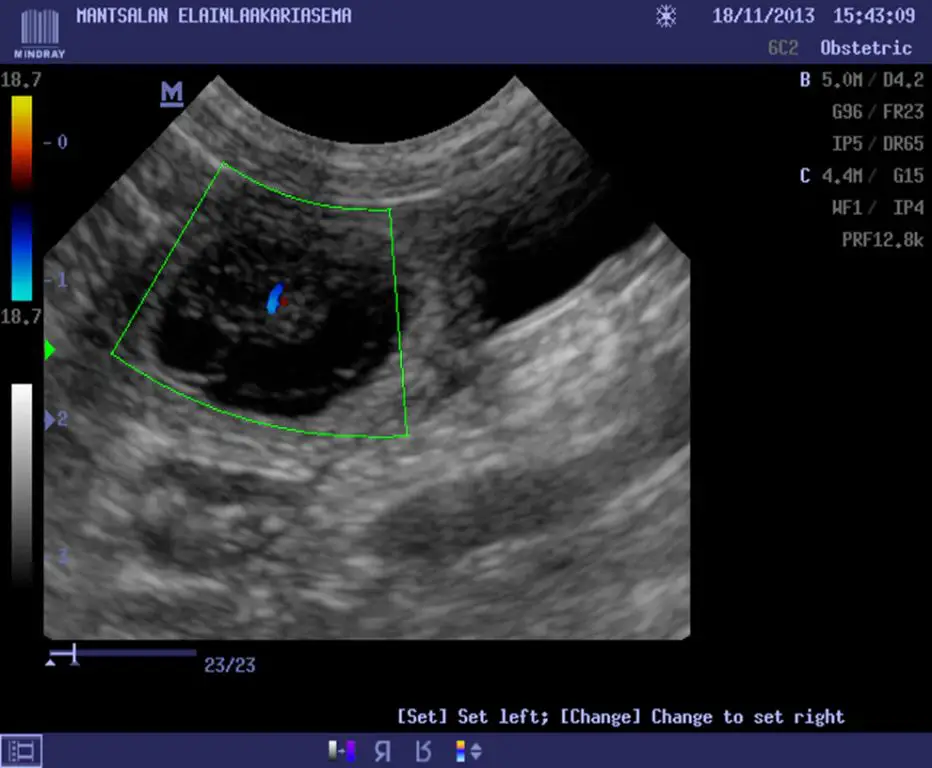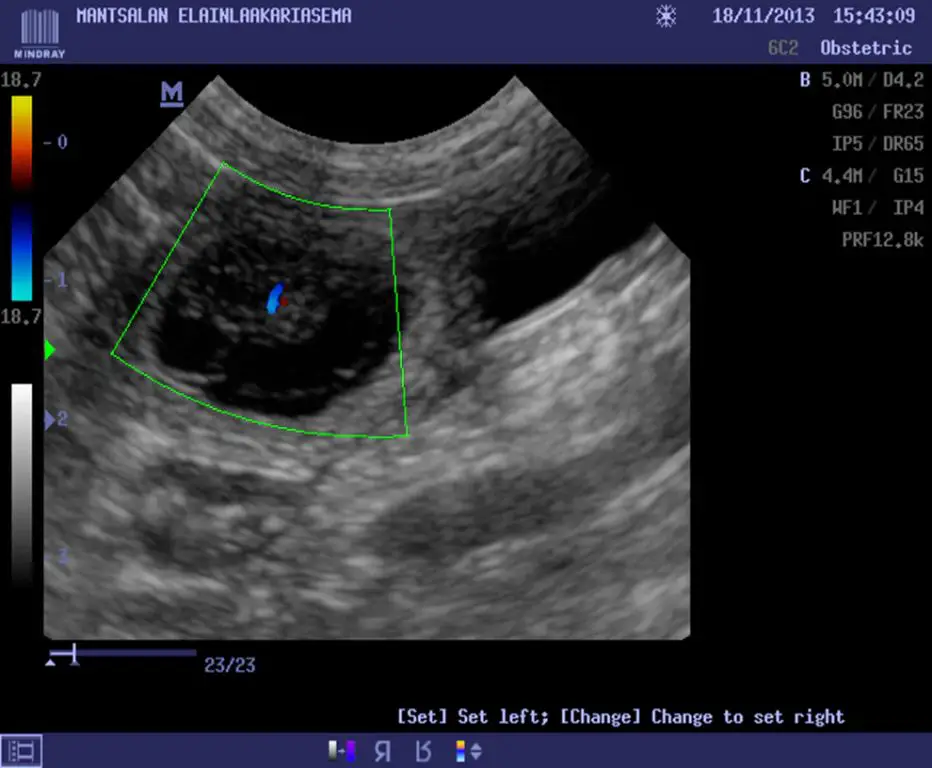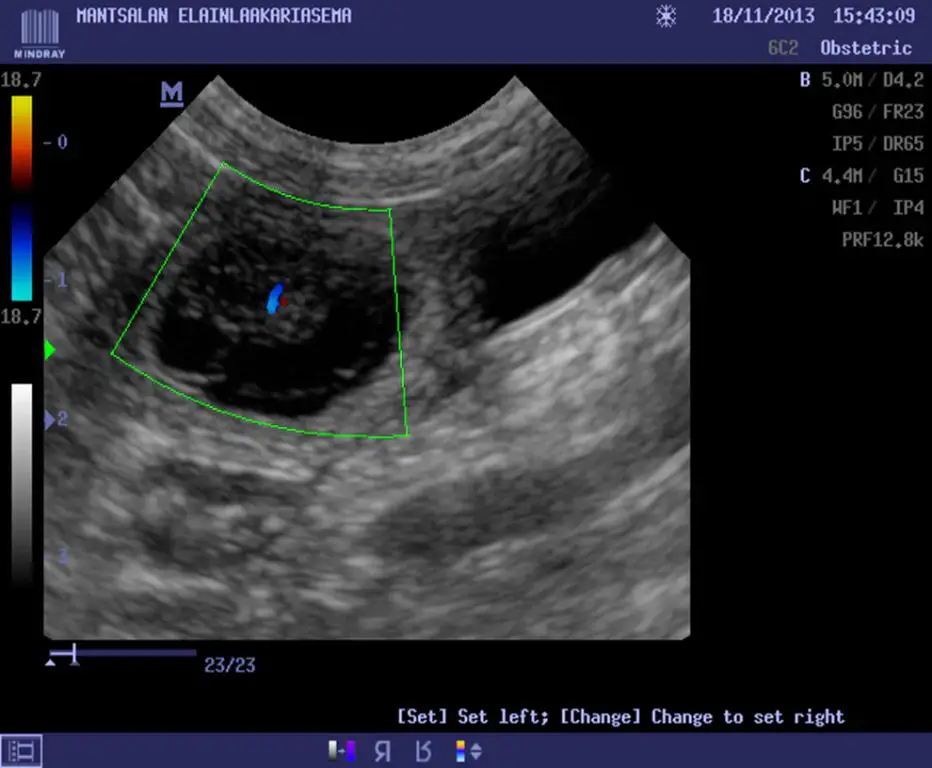Introduction
An ultrasound is an important tool for monitoring a dog’s pregnancy and ensuring the health of the puppies. Ultrasounds allow veterinarians to see inside the dog’s abdomen and view the puppies as they grow and develop.
There are a few main reasons veterinarians recommend ultrasounds during canine pregnancy:
- To confirm the pregnancy and determine how many puppies there are
- To check for any pregnancy complications or problems
- To monitor the growth and position of the puppies
- To determine when the puppies will be born/due date
There are two main types of ultrasounds used during dog pregnancy:
- Abdominal ultrasound – The probe is moved over the dog’s abdomen to see inside the womb
- Transabdominal ultrasound – The probe is inserted into the dog’s vagina to get closer images of the puppies
Ultrasounds allow close monitoring of the pregnancy to ensure the health of momma dog and her puppies. This article provides guidelines on when ultrasounds should be scheduled during the different stages of canine pregnancy.
When to Schedule the First Ultrasound

The first ultrasound for a pregnant dog should be scheduled around 4 weeks after breeding. At this early stage, an ultrasound can confirm whether the dog is pregnant and check on the health and development of the fetuses.
According to the Animal Ultrasound Association, the earliest an ultrasound can reliably detect pregnancy is around 30 days gestation (source). At this point, the ultrasound can confirm the pregnancy, determine how many puppies there are, and check for any potential issues or abnormalities early on.
An ultrasound around 28-30 days into the pregnancy will allow the vet to visualize the fetal heartbeats and measure the crown-rump length of the fetuses to date the pregnancy and determine viability. This first ultrasound provides important benchmarks to track the health and size of the litter going forward.
What the First Ultrasound Checks
The first ultrasound for a pregnant dog is usually scheduled for around day 25-35 after breeding. This initial ultrasound is done to confirm viability of the pregnancy and check early development.
Specifically, the first pregnancy ultrasound checks for three main elements:
- Viability of the pregnancy – The ultrasound will confirm if the dog is definitively pregnant by looking for fetal heartbeats and embryonic vesicles.
- Number of puppies – Though not completely accurate this early on, the initial ultrasound gives a rough estimate of potential litter size by counting the number of gestational sacs visible.
- Developmental progress – The ultrasound technician will check that the embryos/fetuses appear normal and are progressing on track developmentally for the given gestational age.
While not yet able to give an exact puppy count, the first ultrasound provides important confirmation that the dog is pregnant and the pregnancy appears healthy. Further ultrasounds later in the pregnancy will provide more precision on litter size and puppy viability.
When to Do the Second Ultrasound
The second ultrasound for a pregnant dog is typically performed between 6-8 weeks after breeding. This ultrasound allows the veterinarian to monitor the growth and development of the puppies. At this stage of pregnancy, the puppies will appear much more developed compared to the first ultrasound. The veterinarian will be able to visualize the puppies’ limbs, skulls, spine and organs. Each puppy will also be distinguishable from their siblings at this point.
The second ultrasound serves a few key purposes:
- Confirm the pregnancy is progressing normally without any abnormalities or complications.
- Get an updated puppy count since the number can change from the first ultrasound.
- Determine puppy viability by detecting heartbeats.
- Assess the size of the litter.
Some veterinarians may recommend doing this second ultrasound earlier, at around 5 weeks, for high-risk pregnancies where careful monitoring is advised. However, the standard timing remains 6-8 weeks as the best window for visualizing development and doing an accurate assessment (https://embassylakesanimalhospital.com/blog/dog-pregnancy/).
What the Second Ultrasound Reveals
The second ultrasound, usually done around 28-35 days into the pregnancy, allows the veterinarian to check on the size and development of the puppies. At this stage, the skeletons of the puppies will be visible on ultrasound, though the puppies will still be very small, often between 1-3 cm long depending on the breed. The ultrasound will reveal if the puppies are growing at a normal rate and check for any developmental abnormalities.
The second ultrasound also checks the positioning of the puppies in the dog’s uterus. Puppies should be equally spaced throughout the two uterine horns by this point in pregnancy. If there are positioning issues, such as puppies clustered in one horn, it can indicate a problem. Proper positioning is important for the puppies to develop normally and get adequate nutrition from the placenta.

Overall, the second ultrasound provides important information about the ongoing health and development of the puppies, which helps veterinarians monitor the pregnancy and prepare for delivery. It also gives owners a chance to see their puppies on the ultrasound.
Final Ultrasound Before Birth
Around 8 weeks into the pregnancy, your veterinarian will likely recommend a final ultrasound before your dog gives birth. This last ultrasound usually occurs about 1-2 weeks before the anticipated due date.
The main purpose of this final scan is to check the size and position of the puppies. The vet will look at how the puppies are arranged in the uterus and make sure there is enough room for them to be delivered safely. They will also confirm the puppy count one last time and check for any concerning signs.
Additionally, the final ultrasound can provide an estimate of the puppies’ size. Knowing the size helps the vet anticipate potential issues or complications with the birthing process. Large puppies may make delivery more difficult, while very small puppies may be weaker or underdeveloped.
Overall, this last ultrasound gives your vet the information they need to ensure the health of your dog and her puppies leading up to birth. It allows them to prepare for any potential problems and helps you know what to expect as your dog enters the final stage of pregnancy.https://embassylakesanimalhospital.com/blog/dog-pregnancy/
What the Final Ultrasound Checks
The final ultrasound is typically done around 56 days into the pregnancy to check the puppies’ size, positioning, and movements in preparation for whelping (VCA Animal Hospitals). The ultrasound technician will measure each puppy to estimate its size and weight. This allows the breeder to determine if a C-section may be necessary for delivering large puppies.
The ultrasound also checks the puppies’ positioning in the womb. Puppies should be oriented head first towards the cervix for a smooth natural delivery. Any breech puppies may complicate the birthing process. Monitoring positioning allows the breeder to consult their vet and prepare accordingly.
The technician observes puppy movements to ensure they are active and healthy. Limited movements could indicate distress or health issues that require vet intervention. By 56 days, puppies should be quite active and mobile on the ultrasound.
Overall, the final ultrasound provides critical information to help breeders prepare for whelping. Knowing puppy size, position, and health allows breeders to plan for any potential complications and ensure the smoothest birthing process. It gives peace of mind that the puppies are developing normally right before delivery.
Ultrasound Benefits
There are a number of benefits to getting an ultrasound during a dog’s pregnancy. Some of the main advantages include:
Confirm pregnancy – An ultrasound can confirm pregnancy as early as 20-25 days after breeding. It allows you to see the presence of puppies and monitor the development.

Monitor development – Subsequent ultrasounds let you visually follow the puppies’ growth and development. You can check for any potential issues and ensure the puppies are growing at a normal rate.
Prepare for delivery – Ultrasounds late in pregnancy help estimate size and number of puppies to expect. This allows you to adequately prepare for the delivery and care of the litter after birth.1
Potential Ultrasound Risks
While ultrasound imaging is generally considered safe for pregnant dogs, there are some potential risks and downsides to be aware of:
Expense – Ultrasound exams can be quite costly, with prices ranging from $300-$500 depending on your location and clinic. For owners on a tight budget, the expense may not make ultrasound feasible.
Stress for the dog – Some dogs may find the ultrasound process stressful, especially if they are anxious around new environments/people. The gel and wand pressure on the abdomen can also cause minor discomfort. Owners should monitor their dog’s stress levels.
False positives/negatives – Ultrasounds are not 100% accurate when counting puppies, so there is a chance of false positives (detecting more puppies than are present) or false negatives (missing some puppies). The later in pregnancy, the more accurate the count tends to be. But some margin of error is expected.
While ultrasounds provide valuable information, owners should weigh the pros and cons carefully for their specific situation. Talk to your veterinarian about whether ultrasound is recommended for your pregnant dog based on risk factors and budget.
Conclusion
Getting ultrasound scans during your dog’s pregnancy can provide incredibly helpful information, but determining the right timing and number of scans is important. Ultrasounds allow you to pinpoint your dog’s due date, get puppy counts, monitor fetal development, and detect any potential issues. However, too many unnecessary ultrasounds could pose risks from stress and anesthesia. Work closely with your veterinarian to decide the optimal ultrasound schedule for monitoring your dog’s pregnancy safely.
The first ultrasound is usually scheduled around day 25-30 to confirm pregnancy, count puppies, and check for heartbeats. The second scan around day 45-50 assesses fetal growth and development. A final scan 1-2 weeks before birth lets you prepare for delivery and may detect any concerning abnormalities. While these general guidelines provide a roadmap, your veterinarian will make recommendations tailored to your dog’s specific needs and risk factors.

Overall, ultrasounds provide invaluable information during dog pregnancy but also require thoughtful consideration of benefits vs risks. By partnering with your trusted vet, you can feel confident in navigating this exciting journey and delivering happy, healthy puppies.